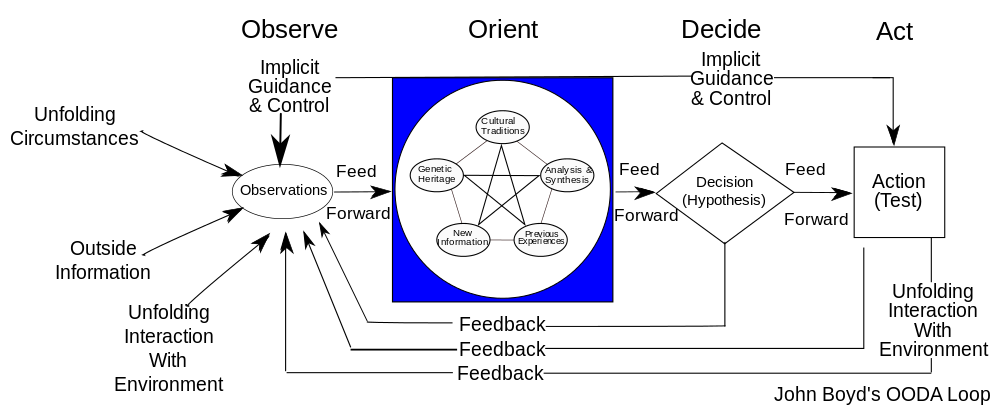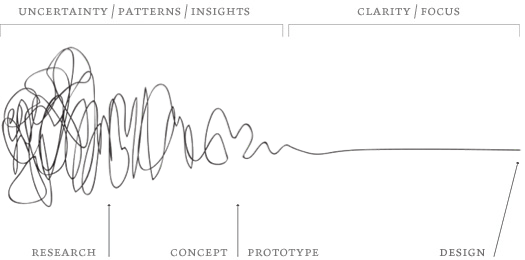Back to the OODA – Making Design Decisions
Blog: Form Follows Function

A few weeks back, in my post “Enterprise Architecture and the Business of IT”, I mentioned that I was finding myself drawn more and more toward Enterprise Architecture (EA) as a discipline, given its impact on my work as a software architect. Rather than a top-down approach, seeking to design an enterprise as a whole, I find myself backing into it from the bottom-up, seeking to ensure that the systems I design fit the context in which they will live. This involves understanding not only the technology, but also how it interacts, or not, with multiple social systems in order to (ideally) carry out the purpose of the enterprise.
Tom Graves is currently in the middle of a series on whole-enterprise architecture on his Tetradian blog. The third post of the series, “Towards a whole-enterprise architecture standard – 3: Method”, focuses on the need for a flexible design method:
But as we move towards whole-enterprise architecture, we need architecture-methods that can self-adapt for any scope, any scale, any level, any domains, any forms of implementation – and that’s a whole new ball-game…
He further states:
the methods we need for the kind of architecture-work we’re facing now and, even more, into the future, will need not only to work well with any scope, any scale and so on, but must have deep support for non-linearity built right into the core – yet in a way that fully supports formal rigour and discipline as well.
To begin answering the question “But where do we start?”, Tom looks at the Plan-Do-Check-Act (PDCA) cycle, which he finds wanting because:
… the reality is that PDCA doesn’t go anything like far enough for what we need. In particular, it doesn’t really touch all that much on the human aspects of change…
This is a weakness that I mentioned in “OODA vs PDCA – What’s the Difference?”. PDCA, by starting with “Plan” and without any reference to context, is flawed in my opinion. Even if one argues that assessing the context is implied, leaving it to an implication fails to give it the prominence it deserves. In his post, Tom refers to ‘the squiggle’, a visualization of the design process:

In an environment of uncertainty (which pretty much includes anything humans are even peripherally involved with), exploration of the context space will be required to understand the gross architecture of the problem. In reconciling the multiple contexts involved, challenges will emerge and will need to be integrated into the architecture of the solution as well. This fractal and iterative exploratory process is well represented by ‘the squiggle’ and, in my opinion, well described by the OODA (Observe, Orient, Decide, and Act) loop.
In “Architecture and OODA Loops – Fast is not Enough”, I discussed how the OODA loops maps to this kind of messy, multi-level process of sense-making and decision-making. The “and” is extremely important in that while decision-making with little or no sense-making may be quick, it’s less likely to effective due to the disconnect from reality. On the other hand, filtering and prioritizing (parts of the Orient component of the loop) is also needed to prevent analysis paralysis.
In my opinion, its recognition and handling of the tension between informed decision-making and quick decision-making makes OODA an excellent candidate for a design meta-method. It is heavily subjective, relying on context to guide appropriate response. That being said, an objective method that’s divorced from context imposes a false sense of simplicity with no real benefit (and very real risks).
Reality is messy; our design methodology should work with, not against that.
[OODA Loop diagram by Patrick Edwin Moran via Wikimedia Commons]
Leave a Comment
You must be logged in to post a comment.







